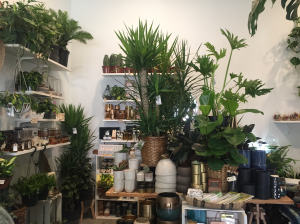By Isabella Reilly
On the morning of Nov. 15, 2022, lifelong Taylor Swift fan Emma McElroy sat at her kitchen table at 9:30 a.m. Bright-eyed and glued to her computer screen, she patiently waited to join the Verified Fan presale for Swift’s upcoming tour — the first concert the singer has headlined since 2018.
At 9:41 a.m, she nervously texted her friend Jayne Willard.
“Are you in the waiting room?”
“Yes,” Willard replied. “I’m very scared.”
But by 10:33 a.m., McElroy sent another text, this time excited.
“I got five lower bowl tickets for April 28 in Atlanta!”
“Still 2,000 plus people in front of me,” Willard replied at 10:35 a.m.
And at 11:21 a.m., Willard sent two sad face emojis with a message that read, “I haven’t moved in over 40 minutes.”
As a long-time fan of the singer herself, Willard said the cost didn’t matter. She had to see Swift live.
Still, she didn’t think she’d have to bear with a 6-hour, slow-moving wait in Ticketmaster’s virtual queue to get what she wanted.
“Would’ve, Could’ve, Should’ve”
Willard was one of millions of fans to experience significant wait times, site interaction issues and exorbitant additional fees during Swift’s Ticketmaster presale. Fans and scalpers competed for a seat to one of the tour’s 52 U.S. show dates. Twenty-six concert hopefuls have since filed suit against the ticketing company, claiming it engaged in anticompetitive and fraudulent conduct.
“I’m not going to make excuses for anyone because we asked them, multiple times, if they could handle this kind of demand and we were assured they could,” Swift said in an Instagram statement. “It’s truly amazing 2.4 million people got tickets, but it really pisses me off that a lot of them feel like they went through several bear attacks to get them.”
McElroy said as soon as she began moving in the queue, she knew she was ahead of others in line. She said she couldn’t believe how quickly she was able to get her hands on tickets.
Willard, who was competing for tickets to Swift’s third show in Tampa, said she entered the presale intending to buy two seats, assuming someone would want to go with her.
But after finally getting through to ticket selection, Willard recalls clicking on a single seat to view the price before immediately being sent to checkout.
“I had one seat in my cart and thought, ‘I’m not going to risk this,’” she said. “I was just grateful to get out with something.”
Despite the friends’ vastly different experiences, Willard and McElroy were some of the lucky ones. The ticket battle left many fans, such as Alexa Mazloff, empty-handed.
After a 4-hour wait in the queue, Mazloff said she thought she could rejoin the presale line the following day and purchase one of the remaining tickets to Swift’s first Tampa show. Though she didn’t think her selection would be as vast, she trusted that if she logged on early enough the next morning, she would be fine.
She later learned she wasn’t.
To address what Ticketmaster called a “historic demand for tickets,” the company postponed the exclusive presale for Capital One cardholders scheduled for the afternoon of Nov. 15 to the following day. The general public sale, scheduled for Nov. 18, was canceled later that week.
Jennifer Kinder, a lawyer representing Swift fans and founding attorney at the Dallas-based firm Kinder Law PLLC, said she had never seen a situation like Swift’s recent ticket sales before.
The Ticketmaster issues made national news, even attracting the attention of the U.S. Senate Judiciary Committee, which held a case hearing on the matter on Jan. 24.
“Ticketmaster ought to look in the mirror and say, ‘I’m the problem, it’s me,’” Sen. Richard Blumenthal said during the three-hour hearing, quoting a lyric from Swift’s new single “Anti-Hero.”
Compounding an already trying customer experience, Kinder said verified fan tickets were sold for higher prices than initially negotiated, allowing the company to increase its existing additional fees.
“As long as they can get scalpers and bots to buy a bunch of tickets, then they are ensured that the ticket will be sold two to three more times,” Kinder added. “And each time there is a new fee, they benefit.”
Mazloff said that though she’s still on the hunt for a pair of tickets, most available for resale are out of her price range. She recalled an offer of one set of tickets priced at $1,000 each.
“I’m sorry, but that is out of budget,” she said. “For me and for most people.”
“The Great War”
Kinder said she stands behind her decision to take on the suit, regardless of the criticism she’s faced.
She hopes her efforts will help prevent the further implementation of industry monopolies like the one fans claim Ticketmaster currently holds. Ticketmaster merged with Live Nation Entertainment, an events promoter and venue operator, in 2010. As a result, the company now holds an estimated 70% share of the market for ticketing and live events.
Since Kinder Law began its “Take Down Ticketmaster” campaign in November, the firm has encouraged fans of other major artists interested in fundamental change to document their ticketing experiences, adding, “consumers need to stand up for themselves.”
The first federal court hearing for the Swift fans’ lawsuit against the ticketing giant will be held on March 27. Kinder said the firm is prepared for what will likely be a “big fight.”
As for Willard, she isn’t letting anything get in the way of seeing Swift in Tampa.
A first-year graduate student at UNC-Chapel Hill, she even moved her thesis defense, initially due by April 16, so it wouldn’t conflict with her show date. The committee hearing her defense agreed to do so on April 7, a scheduled university holiday.
With her one ticket secured, she’ll attend Swift’s concert solo, hoping the show will be akin to a religious experience.
“Nothing is going to stop me now,” she said.
———
Edited by Allie Kelly and Guillermo Molero


